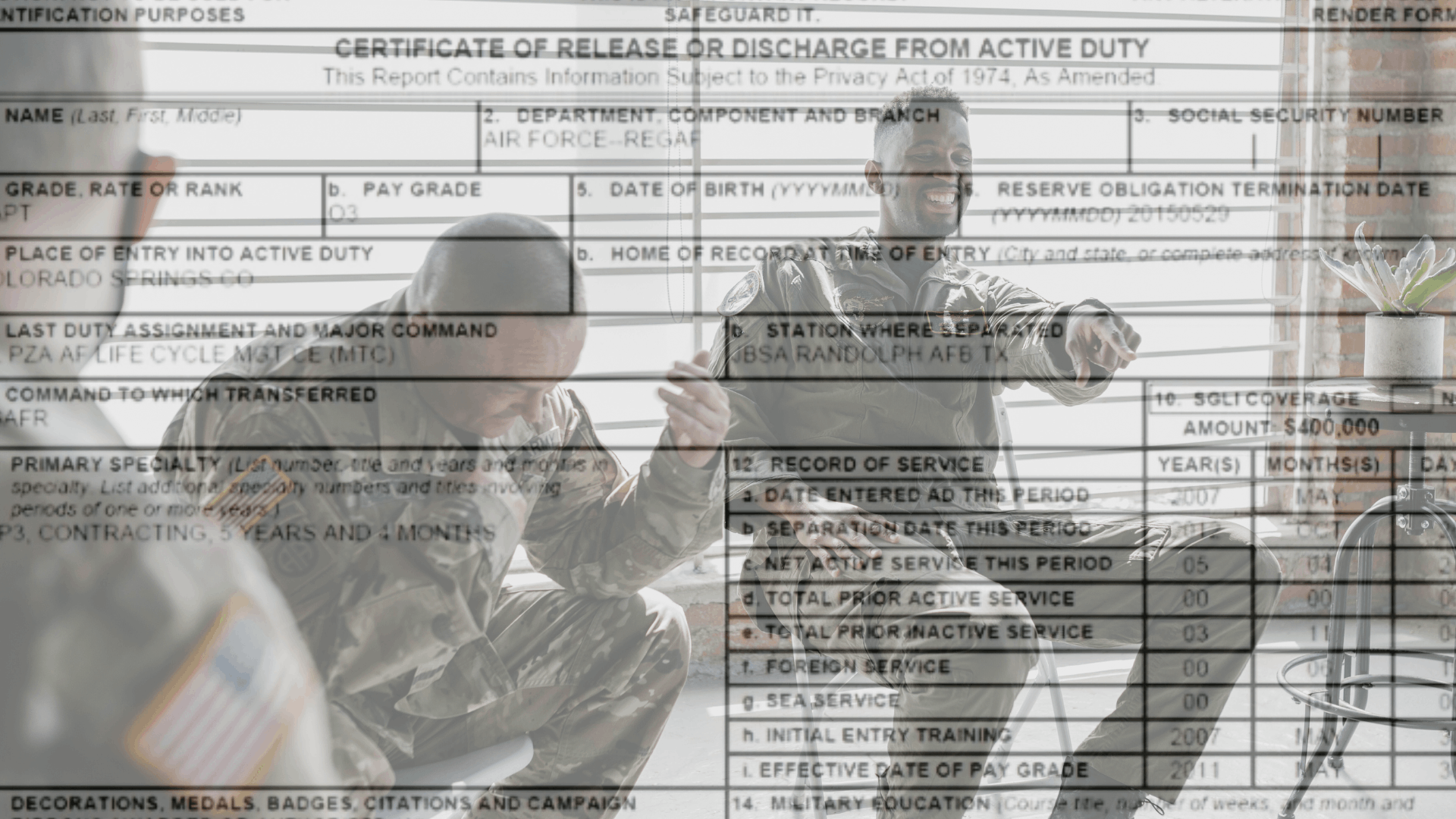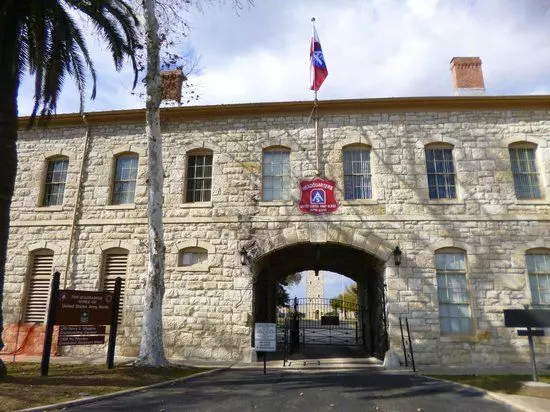Understanding the DD214: A Veteran’s Guide to Your Most Important Military Document

As a U.S. military veteran, the DD Form 214, or Certificate of Release or Discharge from Active Duty, is more than just a piece of paper, it’s your passport to a wide array of benefits and opportunities earned through your service. Often referred to as “separation papers” or “discharge papers,” this single-page document encapsulates your military career and is critical for accessing healthcare, education, home loans, employment preferences, and more. In this comprehensive guide, we’ll explore what the DD214 is, why it’s vital, how to obtain it, how to correct errors, and how to protect it. Plus, we’ll share actionable steps to ensure you’re prepared to leverage this document for your future.
What is the DD Form 214?
The DD214 is issued by the Department of Defense (DoD) when a service member separates from active duty or completes at least 90 consecutive days of active duty training. It’s a concise, verified record of your military service, detailing key aspects of your time in uniform. The document includes:
-
Dates of Service: Entry and separation dates for active duty.
-
Character of Service: Classifications like Honorable, General Under Honorable Conditions, or Dishonorable, which significantly impact benefit eligibility.
-
Rank and Pay Grade: Your highest rank and pay grade at the time of separation.
-
Military Occupational Specialty (MOS): Or equivalent job codes, such as AFSC (Air Force) or NEC (Navy), reflecting your role.
-
Awards and Decorations: Medals, badges, citations, and campaign awards earned during service.
-
Training and Education: Military schools, courses, and certifications completed.
-
Service Details: Total time served, including foreign or sea service, and any time lost due to unauthorized absence.
-
Reason for Separation: The legal authority and code for your discharge, such as completion of service, retirement, or medical reasons.
-
Reenlistment Eligibility: Codes indicating whether you’re eligible to reenlist and under what conditions.
Think of the DD214 as your military resume—it’s the official proof of your service, required by government agencies, employers, and veteran organizations to verify your veteran status.
Why is the DD214 So Important?
The DD214 is your gateway to the benefits and opportunities you’ve earned. Without it, accessing critical services can be challenging or impossible. Here’s why it matters:
-
Veterans Benefits: The DD214 is required to apply for VA healthcare, GI Bill education benefits, VA home loans, disability compensation, and vocational rehabilitation programs.
-
Employment Opportunities: Many employers, especially in government or federal contracting, offer veteran hiring preferences. The DD214 verifies your service and qualifications, helping you stand out in competitive job markets.
-
Reenlistment: If you’re considering returning to military service, the DD214’s reenlistment codes determine your eligibility and whether you can carry over your rank or qualifications.
-
Military Funeral Honors: For deceased veterans, the DD214 is needed by surviving spouses or family members to secure honors like the folding and presentation of the U.S. burial flag and the sounding of Taps.
-
Veteran Discounts and Incentives: From retail discounts to veteran-owned business certifications, the DD214 proves your eligibility for exclusive offers.
-
Retirement and Membership: It’s essential for accessing military retirement benefits and joining veteran organizations like the VFW or American Legion.
Any errors on your DD214, such as incorrect dates, missing awards, or inaccurate discharge status—can delay or deny these benefits. Reviewing it carefully upon separation is critical to avoid future headaches.
How to Obtain Your DD214
Service members typically receive their DD214 upon separation, but if you’ve lost it, never received it, or need a replacement, there are several reliable methods to request a copy:
-
Online via eVetRecs:
-
Visit the National Archives’ eVetRecs website (vetrecs.archives.gov).
-
Create an account using an identity-verified ID.me login, which may require a “live selfie” for security.
-
Select “DD Form 214/Separation Document” and choose between a “deleted” (redacted) or “undeleted” (full) copy. The undeleted version, which includes all details, is typically required for benefits.
-
Provide as much information as possible: full name, service number or Social Security Number, branch, and approximate dates of service.
-
Ensure your email accepts messages from @nara.gov to receive updates on your request.
-
-
By Mail or Fax:
-
Download Standard Form 180 (SF-180) from the National Archives website.
-
Complete the form with your service details and specify the reason for your request (e.g., applying for VA benefits, employment verification).
-
Mail to: National Personnel Records Center (NPRC), 1 Archives Dr., St. Louis, MO 63138.
-
Fax to: 314-801-9195. For urgent requests (e.g., funeral honors), mark “Emergency Request” in the Purpose section.
-
Include proof of identity for yourself or, for deceased veterans, proof of death (e.g., death certificate, obituary, or a letter from a funeral home).
-
-
Through milConnect:
-
If you separated after 2010, you may access a digital copy via the VA’s milConnect website (milconnect.dmdc.osd.mil).
-
Log in with a DS Logon or Common Access Card (CAC) and download your DD214 from your Official Military Personnel File (OMPF).
-
-
In Person:
-
Visit the NPRC in St. Louis, MO, with valid identification (e.g., driver’s license, passport).
-
Alternatively, hire an independent researcher listed on the National Archives website to retrieve records on your behalf.
-
-
State or County Veterans Agencies:
-
Some states (e.g., Nebraska, Pennsylvania) or counties maintain copies of DD214s if the veteran filed them locally. Contact your local Veterans Service Officer (VSO) to check availability.
-
-
For Emergencies:
-
For urgent needs, such as burial benefits, select “Emergency Request” in eVetRecs or note it on the SF-180. Fax to 314-801-0764 and follow up by calling 314-801-0800 (be prepared for long hold times).
-
Processing Time: Standard requests take 3–6 weeks, but emergencies may be expedited. Records from before 1992 (or pre-1960 for Army, pre-1964 for Air Force) may have been affected by the 1973 NPRC fire, requiring reconstruction from alternate sources, which can take longer.
Cost: Copies are free for veterans and next-of-kin. Beware of third-party services charging fees, they cannot expedite requests and may increase the risk of identity theft.
Pro Tip: When requesting your DD214, keep a record of your submission details and follow up if you don’t receive a response within the expected timeframe.
Correcting Errors on Your DD214
Mistakes on your DD214, such as incorrect dates, missing awards, or wrong discharge status, can cause significant issues when applying for benefits. Here’s how to fix them:
-
File a DD Form 149: Submit a written request using DD Form 149 (Application for Correction of Military Record) to your branch’s Board for Correction of Military Records. You can find the form and submission instructions on the DoD Forms Management Program website (www.esd.whs.mil/Directives/forms).
-
Provide Evidence: Include supporting documents, such as orders, award citations, or personnel records, to substantiate your correction request.
-
Outcome: Approved corrections are issued on a DD Form 215, which supplements your original DD214. Always keep both documents together for future use.
-
Act Early: Review your DD214 carefully before leaving the military. Corrections are easier to process soon after separation, as records are more readily accessible.
Pro Tip: If you’re unsure how to proceed, a Veterans Service Officer (VSO) can guide you through the correction process and help gather necessary documentation.
Safeguarding Your DD214
Your DD214 contains sensitive information, including your Social Security Number, making it a target for identity theft. Protect it with these best practices:
-
Store Securely: Keep a physical copy in a fireproof safe or locked filing cabinet. Create a digital backup and store it in a password-protected file or encrypted cloud service.
-
File with Your County: Many counties, such as Rockdale County, GA, allow veterans to record their DD214 for free, providing easy access to certified copies. Check your local recorder’s office, as some states protect these records from public access to prevent fraud.
-
Limit Public Sharing: Avoid submitting your DD214 in public forums, such as court filings, as it may become accessible to unauthorized parties, increasing identity theft risks.
-
Use Redacted Copies: For non-benefit purposes (e.g., employment verification where sensitive details aren’t needed), request a “deleted” copy from the NPRC, which omits information like separation codes or character of service.
Pro Tip: Consider laminating a physical copy for durability, but keep an unlaminated version for official submissions, as some agencies require originals.
Additional Notes for Veterans
-
Multiple Copies of the DD214: The DD214 exists in eight versions (e.g., Member 1, Member 4, Service 2). The “long form” (Member 4, unredacted) is typically required for benefits, as it includes all details. If you lose your personal Member 4 copy, Service 2, 7, or 8 copies are legal substitutes.
-
Lost or Destroyed Records: If your DD214 was lost in the 1973 NPRC fire, the National Archives can issue an NA Form 13038 (Certification of Military Service) as a legal substitute for benefit applications.
-
Next-of-Kin Access: Immediate family members (spouse, parent, child, sibling) or authorized third parties (e.g., funeral homes) can request a deceased veteran’s DD214 with proof of death, such as a death certificate or obituary.
-
State-Specific Resources: Some states, like Nebraska or Pennsylvania, maintain veteran discharge records. Contact your state’s Department of Veterans Affairs to explore local options.
Where to Learn More
To dive deeper into managing your DD214 and accessing veteran benefits, check out these trusted resources:
-
National Archives: Visit www.archives.gov/veterans for eVetRecs and SF-180 instructions, plus guidance on requesting military records.
-
VA Website: Explore milConnect or benefits information at www.va.gov to learn about healthcare, education, and loan programs.
-
DoD Forms Management: Find DD214, DD215, and DD149 forms at www.esd.whs.mil/Directives/forms.
-
Veterans Service Officers: Contact your local or state VSO for personalized assistance with records, benefits, or corrections. Find a VSO through the National Association of County Veterans Service Officers (www.nacvso.org).
Take Action Today: Secure Your DD214 and Unlock Your Benefits
Your DD214 is the cornerstone of your post-military life, opening doors to the benefits and opportunities you’ve earned. Don’t wait until you need it to take action—follow these steps now to ensure you’re prepared:
-
Locate Your DD214: If you have it, verify its accuracy and store it securely. If not, request a copy using eVetRecs, SF-180, or milConnect.
-
File with Your County: Record your DD214 with your local recorder’s office for easy access to certified copies.
-
Review for Errors: Check your DD214 for inaccuracies and file a DD Form 149 if corrections are needed.
-
Connect with a VSO: Reach out to a Veterans Service Officer for free, expert guidance on accessing benefits or navigating records requests.
-
Stay Informed: Subscribe to our newsletter for the latest updates on veteran benefits, resources, and tips to support your transition to civilian life.
Don’t let a missing or inaccurate DD214 hold you back. Take control of your military legacy today by securing this vital document and exploring the benefits it unlocks.
Need Help Navigating Your DD214 or VA Home Loan in San Antonio?
As a veteran-owned real estate business, Veteran Real Estate San Antonio: The Beal Group by Christopher Beal, Realtor is here to help you make the most of your service.
📞 Call me at (210)-882-8583
🌐 Visit: www.veteranrealestatesa.com
📩 Email: gobealgroup@gmail.com
Let’s make your benefits work for you.
#ServeAndSave #VeteranRealEstateSA
Sources: National Archives (www.archives.gov), VA.gov, DoD Forms Management Program (www.esd.whs.mil)
Categories
Recent Posts











